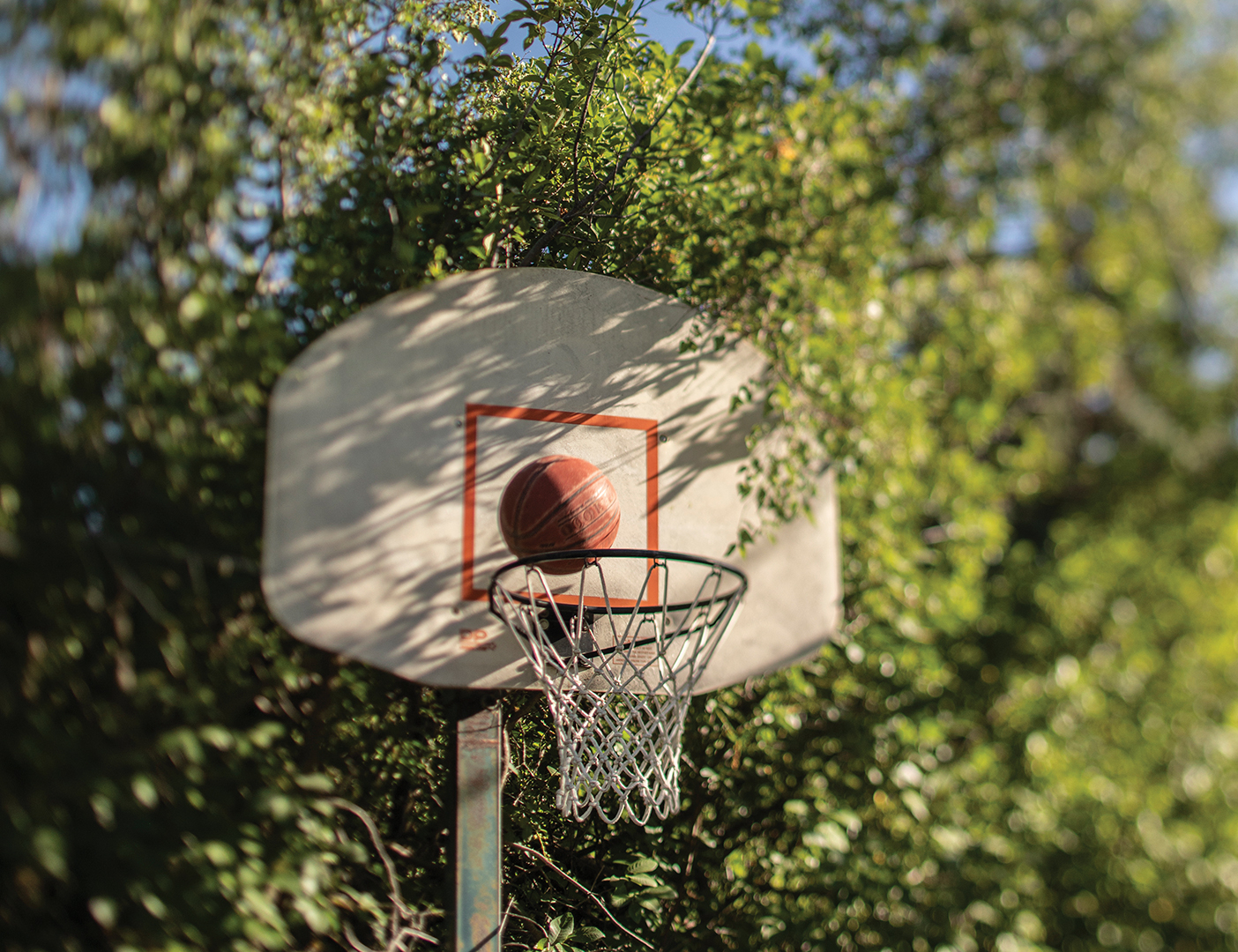How much backyard basketball can be fit into a childhood?

The panel was rectangular, about 3 feet by 4 feet. And, thanks to several crisscrossed layers of 1-inch lumber, it was heavy. When my dad discovered it behind a shed, he decided it would make a good backboard. He already had something to mount it on. Among his stock of corner-post material was an old power pole. It was just the right girth and length and sound from one end to the other. To a keeper of cattle, such a pole might serve a hundred good uses in a corral or barn. But my dad wasn’t thinking about cattle.
When my dad paired the panel and the pole, my oldest brother had four years left at home, which meant six years for my second brother and eight for me. How many games of H-O-R-S-E and 21 and Around the World can be fit into that many years? How much shooting around while waiting for the call to supper? How much talk and laughter? Whatever the answer, it is arrived at by an arithmetic beyond the understanding of a 10-year-old. Whatever the answer, it compelled my dad to mark a spot by the lilac bush. Here we would set the pole. Here a section of grassless work yard would be converted to a half court, a little space for play across from the shop and haystack.
The gravel beneath the surface of our yard made for tough digging. Each inch of the posthole’s depth was earned with a crowbar and shovel. Even when the shovel handle reached its limit, Dad was able, by kneeling at the hole’s rim, to go yet deeper with the crowbar. He cleared the last spoil by sprawling on his belly and reaching into the hole with a scoop rigged from a short-handled hoe.
By comparison, the bolting of rim to backboard and backboard to pole was easy. With the help of a tractor loader, even the erecting of the pole, now top-heavy and unwieldy, went smoothly. Scrupulously adjusting so as to bring the rim to regulation height, my dad and oldest brother tamped the pole solid against all seasons and weathers. As we looked proudly at this new fixture in our yard, one of us asked Dad how long it would last. He thought for a moment. “If we’ve done a good job,” he said, “it’ll last until I’m gone.”
Some years later, I found myself in possession of a rim, a freshly painted plywood backboard, and a 4-by-6 long enough to mount them on—all gifts from my father-in-law, whose three sons were by then grown and gone from home. My only contribution was the net, one of the first things bought when we moved into our house. As a pledge of commitment, I threaded it onto the rim waiting at ground level. Then winter came—and school, work, sunrise, sunset.
It was summer again before I paid any renewed attention to my commitment. My son reminded me. He was only 12, but I remembered how fast 12 turns into 20. To jump-start the project, he asked only that I mark a spot. One day while I was at my work, he was at his, digging three feet down with a bar and shovel, through roots and clay. With no tractor loader, we set the post first, let the concrete cure a day or so, then devised a way to raise the backboard to height. After attaching it to the post with screws, we gazed proudly at our work. The backboard’s paint was exterior latex. The 4-by-6 was pressure-treated. The screws were galvanized. I wanted it all to last.
How many games of 21 can be fit into a childhood? Never enough, as figured by an arithmetic I am beginning to understand. My dad is gone. My son has been away from home almost 10 years. Age and weather have had their way with our basketball net, and with me. Yet in my mind’s eye, I see my son someday putting up a rim and backboard for his children, and I know the part of all this that time doesn’t touch.

Darin Cozzens teaches English in Dobson, North Carolina.
SHARE A FAMILY STORY
In Letters from Home BYU Magazine publishes essays by alumni about family-life experiences—as parents, spouses, grandparents, children. Essays should be 700 words and written in first-person voice. BYU Magazine will pay $350 for essays published in Letters from Home. Send submissions to lettersfromhome@byu.edu.












